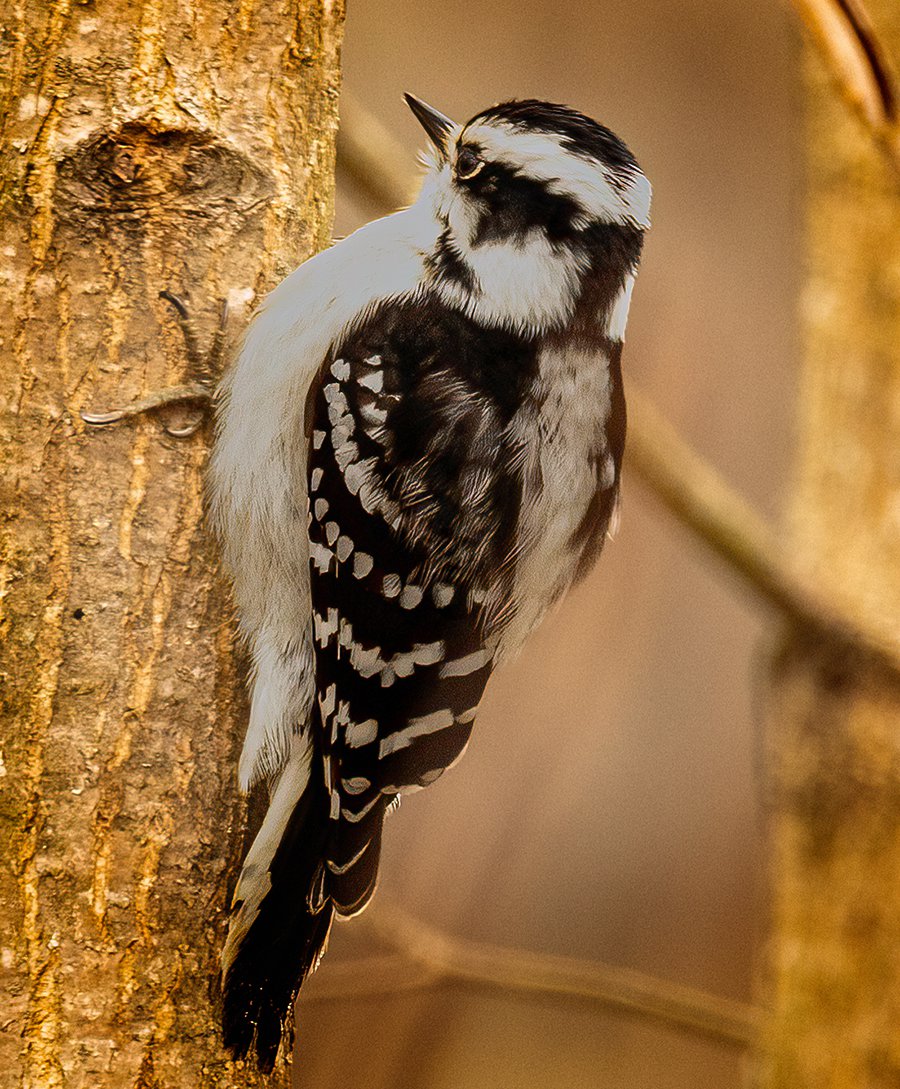Observing Woodpeckers in Florida: Types Variety and Circulation
Observing Woodpeckers in Florida: Types Variety and Circulation
Blog Article
Woodpeckers Unleashed: Exploring the Marvels of These Skilled Tree Climbers
Woodpeckers, with their distinctive markings and balanced drumming echoing with wooded locations, hold a distinct area in the avian world - Woodpeckers in Florida. As we dig into the complex information of woodpeckers' nesting habits, feeding strategies, and the continuous conservation efforts to safeguard these amazing birds, a deeper admiration for their location in nature unfolds.
Makeup and Adaptations
When checking out the anatomy and adjustments of woodpeckers, one can observe amazing features that make it possible for these birds to grow in their specialized eco-friendly specific niche. Woodpeckers are geared up with a collection of distinct physiological features that aid them in their woodpecking habits. One of the most noticeable attributes is their strong, chisel-like beak, which is specialized for boring right into wood to discover insects or produce nesting dental caries. This beak is sustained by strong neck muscular tissues and a highly established skull structure that functions as a shock absorber, permitting woodpeckers to repetitively peck at trees without causing mind injury. Furthermore, woodpeckers have zygodactyl feet, with two toes dealing with forward and two facing in reverse, giving a company grip on tree trunks while they look for food or drum for interaction.
Furthermore, woodpeckers have a special tongue framework that is long, barbed, and sticky, allowing them to extract insects from holes in wood. This customized adjustment allows woodpeckers to make use of a food source that is inaccessible to numerous various other bird types. Generally, the makeup and adjustments of woodpeckers display the remarkable transformative solutions that have actually enabled these birds to thrive in their arboreal habitat.
Drumming Habits
Having explored the anatomy and adjustments of woodpeckers, the emphasis now changes to recognizing their drumming habits, an unique aspect of their interaction and territorial display screens. Drumming is a crucial type of communication among woodpeckers, serving several functions such as developing regions, attracting companions, and signaling alarm. Each woodpecker varieties has an one-of-a-kind drumming pattern that assists individuals identify members of their very own varieties and differentiate them from rivals or predators.
Woodpeckers produce drumming audios by swiftly pecking on resonant surfaces such as dead trees, utility poles, and even metal things, developing a collection of balanced beats. The strength and speed of drumming can differ based upon the objective; as an example, a quick drumming sequence might indicate aggression in the direction of burglars, while a slower and softer drumming pattern might show courtship (Woodpeckers in Florida). In addition, woodpeckers might adjust the frequency and duration of their drumming to communicate specific messages efficiently
Nesting Habits
Exploring the nesting behaviors of woodpeckers reveals interesting understandings right into their reproductive habits and environment options. Woodpeckers are understood for their one-of-a-kind nesting choices, commonly digging deep into dental caries in trees to develop protected areas for elevating their young. These dental caries offer not only as a nesting site but additionally as a secure sanctuary from killers and harsh climate.
Woodpeckers display a high level of fidelity to their nesting websites, usually returning to the same area year after year. This habits highlights the value of appropriate habitat schedule for their reproductive success. The their website choice of a nesting site is critical for woodpeckers, with variables such as tree varieties, height, and decay phase playing considerable duties in their decision-making procedure.
Surprisingly, some woodpecker species are understood to dig deep into several dental caries within their territory, providing themselves with different nesting alternatives. This strategy might work as a kind of insurance coverage against prospective risks or disturbances to their main nesting website.

Feeding Strategies
Woodpeckers employ a variety of specialized feeding strategies to procure their key food Recommended Reading resources. Among one of the most distinctive feeding actions of woodpeckers is drumming, which involves quick pecking on trees to reveal pests under the bark. This drumming not just aids them locate victim but likewise serves as a method of interaction with other woodpeckers. Woodpeckers have solid, chisel-like beaks that allow them to pierce right into timber effortlessly. Once a hole is created, they use their lengthy, barbed tongues to remove bugs such as ants, beetles, larvae, and spiders. These tongues are coated with sticky saliva that helps trap the prey. Woodpeckers are additionally understood to excavate tooth cavities in trees to access concealed insect larvae or sap. Some varieties, like the acorn woodpecker, shop nuts in specifically developed openings called granaries. This calculated keeping of food aids them endure throughout food deficiency periods. Woodpeckers are genuinely remarkable in their feeding methods, showcasing versatility and knowledge in obtaining their nutrition.
Conservation Initiatives
In the middle of the complex feeding strategies exhibited by woodpeckers, the conservation efforts focused on protecting these interesting birds play a critical role in protecting their habitats and populations. Woodpeckers encounter different risks to their survival, consisting of habitat loss as a result of deforestation, environment modification altering their ecological communities, and crashes with man-made structures such as structures his comment is here and lorries - Woodpeckers in Florida. Guardians are actively functioning to address these obstacles and make certain the long-term health of woodpecker species

Education and learning and public awareness campaigns are additionally essential components of woodpecker preservation efforts. By elevating awareness about the relevance of these birds in maintaining healthy forest ecological communities, conservationists can garner assistance for environment conservation initiatives and advertise responsible land monitoring practices. Through collective initiatives between scientists, policymakers, and neighborhood areas, we can collaborate to protect a future where woodpeckers thrive in their all-natural habitats.
Verdict

Report this page